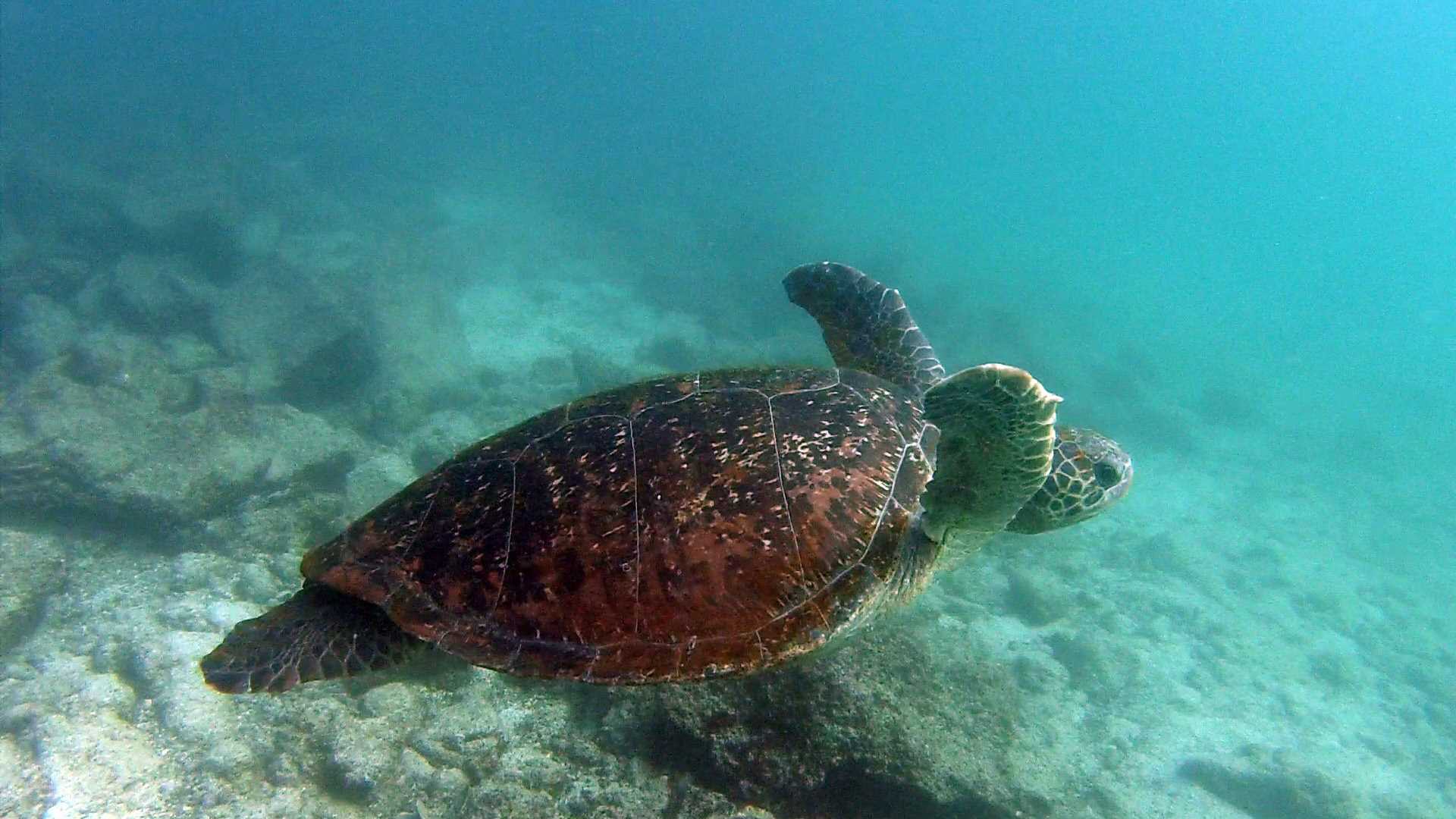After short navigation we finally arrived at the center of the archipelago. It was our first full day of exploration in the Galápagos and we were all very excited to visit Bartolome and Rabida Islands. Bartolome Island is a volcanic island just off the east coast of Santiago. This is one of the younger islands in the archipelago and named after naturalist and lifelong friend of Charles Darwin, Sir Bartholomew James Sullivan, who was a lieutenant aboard the HMS Beagle. Rábida Island also been known as Jervis Island named in honor of the 18th-century British admiral John Jervis.
With the first rays of sun and soft winds we headed to Bartolome with the mission to get to the summit of the island in order to enjoy one of the most spectacular views in the Galapagos. Compared with the larger islands, Bartolome is quite small, but its geological formations along the wooden steps that lead to the top are really impressive. Due to its surrealistic landscape we had the impression of being on another planet, such as mars, but at the same time we were able to understand how these oceanic islands were created. Once at the top of Bartolome Island we received our prize. The air temperature was very refreshing and windy which made it possible to see many other Islands in the distance. From the top we also had the chance to see lots of parasitic cones, such as tuff cones, spatter cones, cinder cones, lava tunnels, and Pinnacle Rock, one of the most famous attractions in the Galapagos. After breakfast we continued our morning expedition on the golden sand. We had the chance to snorkel from the beach and we observed white tipped reef sharks, sting rays, and great number of colorful fish.
We continued our afternoon excursion on Rabida Island with different activities suitable for everyone. A group of kayakers were sent out first and they had a wonderful time exploring the coastline, which is covered with blue-footed boobies, marine iguanas, pelicans, finches, mocking birds, and soaring frigate birds. Along the same coastline we had deep-water snorkelers swimming next to white-tipped reef sharks, sea turtles, fish and Galapagos sea lions. During the last of the snorkeling we observed dozens of garden eels along the sandy bottom with their long bodies and their big eyes. Just before sunset we found ourselves walking along a red sandy beach with sleepy Galapagos sea lions. The light was golden, perfect for photographing sea lions and pelicans in full action. Minutes later we moved behind the beach to observe different species of shore birds such as plovers, American oyster catchers, and whimbrels. It was late and the sunset looked spectacular, when in the sky a flamingo flew straight to the small lagoon behind the beach. We approached it and observed its magnificent pink plumage while it fed on some crustaceans. For many minutes we observed it walking indifferently along the shore, leaving a track on the muddy terrain. It was time to return to the National Geographic Islander leaving behind incredible creatures and unique landscapes, but in our minds the best memories of this magical place will stay with us forever.






